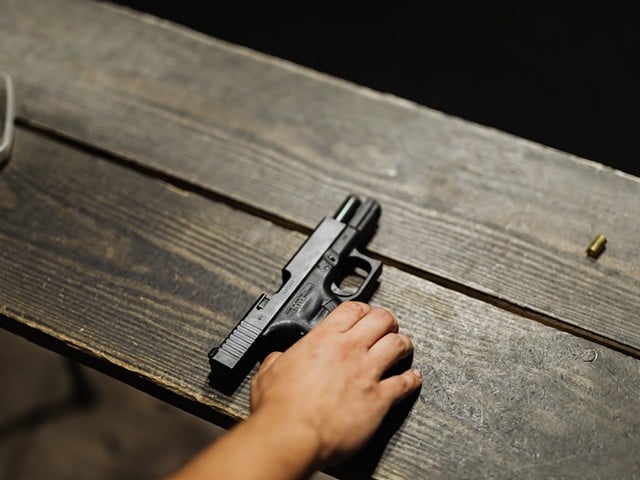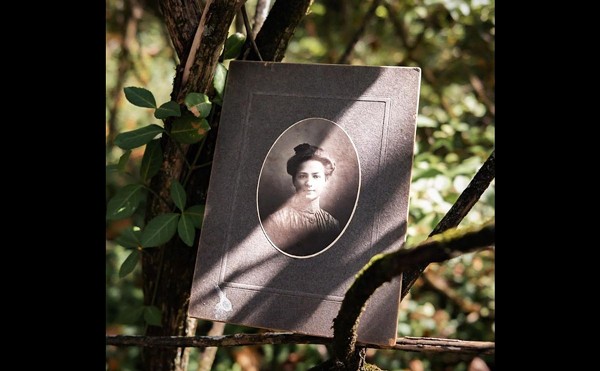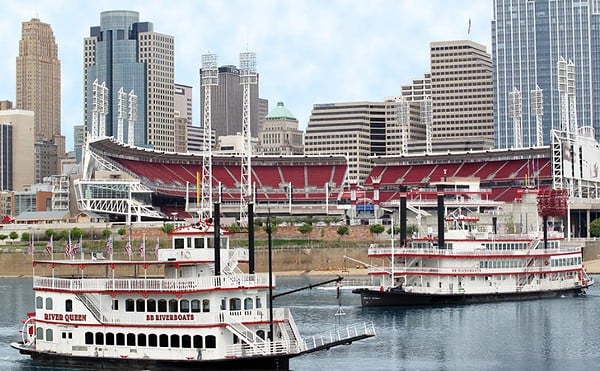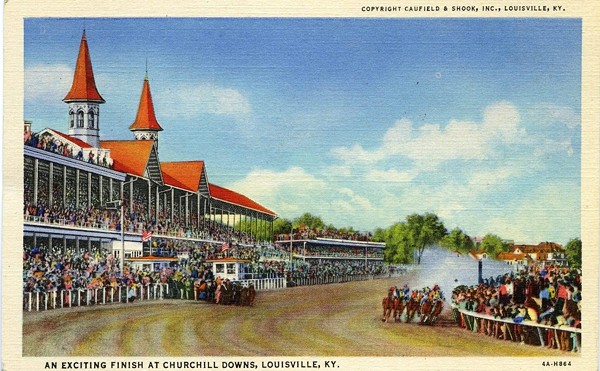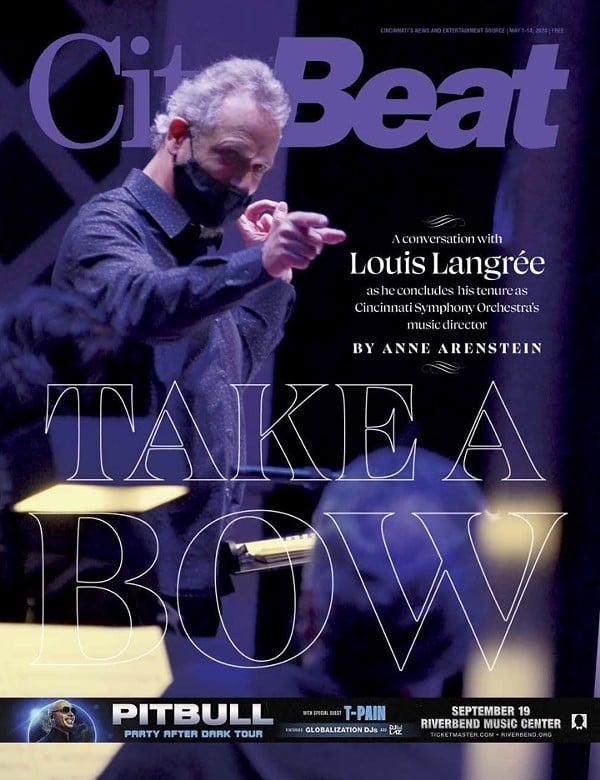
Photo: T Leish, Pexels
The Death Positive Movement, sparked by mortician and writer Cailtin Doughty in the early 2010s, embraces the idea that returning to deathcare’s roots as a community-based practice helps LGBTQ+ people create end-of-life plans that truly reflect who they are and what’s important to them.
“The first time I saw a dead body, we went to sing to him,” said David Copeland, Cincinnati-based end-of-life doula and founder of Live Without Regrets doula services.
“He was in between life and death. His eyes were rolling to the back of his head, but he was also present, even in that moment.”
Over the phone, Copeland’s voice turns almost wistful: “I knew then. I said ‘Something is happening right now.’ Three hours later, we got the call that he transitioned. We packed up our clothes and headed right back to the nursing home to be with the family and to serve him.”
“He was in between life and death. His eyes were rolling to the back of his head, but he was also present, even in that moment.”
Over the phone, Copeland’s voice turns almost wistful: “I knew then. I said ‘Something is happening right now.’ Three hours later, we got the call that he transitioned. We packed up our clothes and headed right back to the nursing home to be with the family and to serve him.”
Over the last decade, Copeland has been part of a death-positive movement helping LGBTQ+ Ohioans meet death and dying on their own terms. Deathcare runs deep in his lineage. “My family was in the Church, and they were servants in their community,” he said. When someone was sick, his great-grandmother and her sisters “would go to the nursing home and sing and bring food. I was always following behind them.”
But as a Black, queer person, Copeland saw a painful gap: LGBTQ+ people often do not have the same resources, autonomy or dignity in death as their straight or cisgender peers.
A return to community care
Before the American Civil War, deathcare — the care and preparation of the dead and dying, along with any social, cultural or spiritual work that goes along with it — largely took place inside the home. It was typically performed by members of the deceased person’s family, most often girls and women. But the advent of modern embalming techniques in the 1860s moved the practice out of the home, creating an
entirely new industry.
Today, America’s deathcare industry is worth an estimated $23 billion, according to Fortune, and includes a massive networks of funeral homes, funeral directors, hospitals, healthcare providers, coroners, embalmers, cemetery and support staff — and even the artisans and businesspeople who make and sell caskets, headstones and burial plots. Deathcare in hospitals or hospice care units is often impersonal or even at odds with the needs and desires of the dying person.
Death workers like Copeland and Donna Baker — an end-of-life doula, death educator and founder of Columbus Community Deathcare (CCD) —belong to a holistic school of thought that rejects the idea of death as a medical emergency and leans into the individual wants and needs of the dying person and their loved ones.
The Death Positive Movement, sparked by mortician and writer Cailtin Doughty in the early 2010s, embraces the idea that returning to deathcare’s roots as a community-based practice helps LGBTQ+ people create end-of-life plans that truly reflect who they are and what’s important to them.
‘A Powerful Experience’
Baker herself was first drawn to a more holistic, community-based type of deathcare after giving birth in her own home with the help of a midwife and birth doula.
“It was just such a powerful experience to be in my own home and just have my babies.” Baker said. “I couldn’t stop thinking that if we can do this for each other at birth, then we should definitely be doing this for each other at the end of our lives too.”
Baker and Copeland, who are both certified by the International End-of-Life Doula Association (INEDLA), consider the spiritual, emotional and psychological needs of their clients, rather than just managing the physical and medical elements of the dying process.
Dying people often seek out end-of-life services on their own accord — in many instances, months or years before they expect to die. However, a dying person’s loved ones might also seek doula services on their behalf, particularly if the dying person’s communication is limited.
Often, they have specific and creative requests for their own deaths and memorials, like a living funeral party.
“In their deaths, they’re just taking matters into their own hands and applying their own rules,” she said. “And a lot of times that has to do with having a firm idea of who you are and what it is that you want — and knowing how to get it in a society that doesn’t necessarily have the options for you that you deserve.”
LGBTQ+ barriers in death and dying
“For years and years and years, the LGBTQ+ community has had to be various degrees of self-reliant when it comes to community care and mutual aid, including but not limited to deathcare,” said Vincent Dronsel Cook, a 23-year-old Columbus-based deathcare worker and healthcare professional.
A queer and trans person himself, Dronsel Cook is acutely aware of the barriers LGBTQ+ often face in death and dying, including homophobia and transphobia in the healthcare and deathcare industries, estrangement, financial strain and a general lack of social support.
In 2018, Dronsel Cook was living at Sravasti Abbey, a Buddhist Monastery in eastern Washington, where he attended a retreat called “Peaceful Living, Peaceful Dying.”
“As an 18-year-old, I had never considered these big profound and very relevant topics before,” he said. “But as the retreat came to a close, I was very moved and breaking the grips that the taboo around death and dying has on our society became a personal project of mine.”
That personal project led him to Baker.
Since 2020, Dronsel Cook has worked closely with Baker under the CCD umbrella to help serve LGBTQ+ Ohioans throughout the dying process and after death.
“That is far out of range for many people, especially members of the LGBTQ+ community that may not have family support in those ways, or lack legal protections in many states regarding employment and anti-discrimination,” Dronsel Cook said. “With higher rates of underemployment, unemployment and homelessness, all of those factors can make affording quality deathcare extremely difficult [for LGBTQ+] people].”
“Community-based deathcare is different because it puts the power and agency of the end of life back into the individual and the community,” he said. “[It] meets the individual, community, family, couple or community where they are and goes from there.”
A dying person might make end-of-life plans that could include their wishes for their final days or hours and plans for preparing their body for burial. In Ohio, it is legal to host a home funeral with the body present, cutting costs and creating space for spiritual and emotional types of deathcare like music, prayer and guided imagery.
One of Baker’s clients chose a natural burial for herself, then hosted a living memorial, inviting friends, relatives and chosen family to decorate her burial board — a wooden plank used to lower the body into the ground, typically after it has been washed and shrouded in biodegradable cloth.
‘Preparation is protection’
David Copeland knows exactly what he wants his own funeral to look like.
“As queer people, it’s been a fight for so long. People don’t understand that our family dynamics are completely different,” he said. “If you don’t have the things in place, there’s so much that can go wrong.”
That’s why Copeland’s loved ones know exactly how he should look for the service, down to details like socks and cufflinks. They know precisely how his hair should be done — particularly important for Black LGBTQ+ people, who might be cared for by a mortician who was never trained to style or care for Black hair types.
“I tell people that preparation is protection,” Copeland said. “We need to speak about it.”
Because LGBTQ+ so often experience limiting homophobia, transphobia and misogynry throughout their lives, the self-determination that holistic, community-based deathcare can provide them has proven particularly powerful among queer and trans people.
Throughout history, LGBTQ+ communities have found ways to subvert legal discrimination and ensure their death plans and medical decisions are carried out by their partners rather than estranged birth families.
Beginning in the late 1800s, queer couples utilized adult adoptions to establish their legal relationship prior to death, affording them the same rights as a legally married couple. The practice continued for centuries in queer communities and became commonplace throughout the AIDS epidemic, allowing a surviving partner to make medical, financial and funeral-related decisions on the dying person’s behalf.
Today, Copeland suggests working with a queer death doula to develop a living will or advanced directive that details your end-of-life plans, along with power-of-attorney documents that allow a designated person to make medical or financial decisions on your behalf when you are not able to communicate.
“LGBTQ+ people should also have a representative of disposition,” Copeland said. “To make sure that your sister or your mother who doesn’t speak to you, doesn’t get your body.”
Without those legal documents, a person’s next of kin can legally make decisions on their behalf and even control what happens to their body after death.
For LGBTQ+ people whose birth families are unsupportive, a lack of preparation could give an estranged parent or relative the power to misgender or deadname them after they die.
For Dronsel Cook, being misrepresented in death is among his deepest fears.
“The thought of being deadnamed in the news obituary or funeral service is extremely painful to think about,” he said. “Yet, it happens to queer and trans people on a regular basis.”
Copeland said arranging paperwork carefully beforehand is the best way to ensure that never happens.
“That’s why we need to be having these conversations, getting these documents in place and getting them into the hands of people that you trust,” he said. “That way, nobody is guessing.”
Breaking the mold
“When I’m asked into homes, I’m able to look at all the different dynamics, who doesn’t like who, who’s angry or upset,” said Copeland. “When I come in, most of that has to go away because I put people to work.
“If you’re here, your job is to serve this dying person. It mends relationships, because we have to depend on each other,” he said. “We’re taking shifts, making the calendar. Eating together, making food together, making sure coffee and tea are present. All while the person is dying, there’s still community being done and commitment being done.”
After a lifetime of death work, Copeland said he still finds great beauty in the emotional and spiritual intimacy of deathcare, even when the process is difficult or uncomfortable.
Mostly, he hopes his work and visibility as a practicing queer death doula will help dispel the fear of uncertainty around dying, and encourage more open conversations around death and dying, particularly among LGBTQ+ communities.
Dronsel Cook feels similarly. “Once you start reflecting on death and dying, it’s impossible to go back to living your life in the same way,” he said. “It brings people closer to themselves, closer to their loved ones and closer to what brings them joy in this life.
“Yes, it’s deathcare. But first, it’s caring for the living.”
To learn more about alternative deathcare options in Ohio, click here.
To learn more about legal pre-planning for LGBTQ+ people, click here.
To learn more about legal pre-planning for LGBTQ+ people, click here.
Subscribe to CityBeat newsletters.
Follow us: Apple News | Google News | NewsBreak | Reddit | Instagram | Facebook | Twitter | Or sign up for our RSS Feed
Follow us: Apple News | Google News | NewsBreak | Reddit | Instagram | Facebook | Twitter | Or sign up for our RSS Feed

